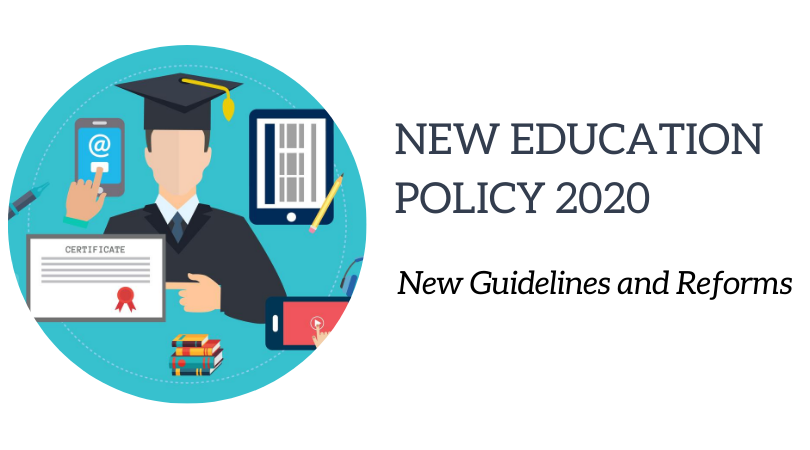To bring about changes in education, the Government of India has come up with the National Education Policy 2020. In this article, we will be highlighting on the reforms, benefits and limitations of the policy.
Reforms and Benefits
- One of the biggest reforms is the shift from 10+2 format to 5+3+3+4 format. In this new structure, the development stages of the child will be divided into early childhood years, school years and secondary school years. Earlier, students had to complete their studies between 6 to 14 years of age. Now with the new policy, it has changed to 3 to 18 years.
- The mother tongue will be used as the medium of imparting information to the students. It has been found that children understand concepts better when told in their mother tongues.
- Vocational education will begin in schools from class 6 and internships will also be included in the education.
- The board exams will undergo changes and a new National Assessment Centre, Parakh will be established.
- Critical thinking and essential learning will be focused on.
- A National Mission on Foundational Literacy and Numeracy will be established soon.
- Undergraduate degree courses will be of four-year duration and the student can exit at any point. The new policy aims to increase the Gross Enrolment Ratio in higher education in India.
- The National Testing Agency will organize a college entrance test two times in a year.
- In the next 15 years, the colleges will be given autonomy for issuing of degrees.
- National Research Foundation will be set up for the promotion of research and innovation in different fields.
- There will be a cap on the fees charged by the private educational institutions.
- Globally renowned universities will come to India and set up a campus here.
- MPhil will not be continued and students with Masters’ can directly apply to get admitted in Ph.D. courses.
- Institute of Translation and Interpretation will be set up to preserve the Indian languages.
Limitations
- Mother language will be the medium of instruction. However, this will be disadvantageous for first-generation learners as they will not have much knowledge about English. While learning English is not everything, but it is vital in the job market. If the medium of instruction is solely the mother language, the students from the backward sections will not have proper knowledge of English. People migrate to other states for job purposes. Now the kids of those individuals will have trouble in understanding the language all of a sudden.
- Autonomy will be granted to the institutions in the next 15 years, as per the new education policy. If the bodies become autonomous, government funding will reduce. Now to generate revenue, the financial institutions may increase the fees of the courses. This will prevent students from financially backward sections from getting a higher education.
- In the recent pandemic situation, using technology to impart education looks like a good option. But in the long run, imparting education digitally to all strata looks a bit difficult. This is because of the lack of digitization in the rural population in India. Many students may drop out of school due to a lack of digital methods. Unless the government looks at a holistic program for digitalization, the backward classes will even push further away from education.
- The setting up of campuses by international education institutes does have a flip side. The universities will have higher fees and the students from the backward sections will unlikely able to pay for it.
The reforms laid down in the National Education Policy look promising. However adequate steps need to be taken so that all sections of the society can benefit from it.
Read more: NEP 2020, New Guidelines and Reforms of our Education Policy












